21 Leadership lessons from Jeff Bezos, Robert Iger and Whitney Johnson
ROBERT IGER, former Disney CEO – 9 leadership lessons
Robert (Bob) Iger is the foreman Chairman and CEO of The Walt Disney Company, one of the world’s largest and most admired media and entertainment companies.
Since becoming CEO in 2005, he oversaw the acquisitions of Pixar (2006), Marvel (2009), Lucasfilm (2012) and 21st Century Fox (2019).

Robert Iger with George Lucas (source: Robert Iger Twitter account)
In 2016 Disney expanded its international footprint by opening its first theme park and resort in Mainland China, Shanghai Disney Resort.
He also took the company to the next level using technology by creating an ambitious direct-to-consumer strategy that features the company’s various streaming services, including Disney+, which debuts on November 12.
His book, The Ride of a Lifetime: Lessons learned from 15 years as CEO of The Walt Disney Company launched on September 23.
Here are 9 leadership lessons that he shared in a LinkedIn article where he tells the story of the Lucasfilm acquisition and the making of the first Disney produced Star Wars film.
9 leadership lessons from Bob Iger:
- Talk to your team members to make sure everyone is on the same page and fully understand the stakes;
- Share the burden of what it means to be responsible with your team members;
- Communicate to your team members that you are their partner and not just a CEO putting pressure on them to deliver results;
- Be a resource and a collaborator, make them feel that they could call you at any moment to discuss any problem they might wrestling with;
- Remind your team that you believe in them and that there are no better minds to run your company’s projects;
- If you can’t make the deadline, it’s ok. Don’t rush to deliver your project on time even if this means taking a short-term hit to your bottom line. Sacrificing quality is never an option;
- Decide wisely when it’s worth engaging in any public discourse and when it’s not;
- When you run negotiations, let your partners know clearly about where you stand while allowing yourself to show empathy if the situation calls for it;
- A successful deal is a deal where you build trust with your partners and suppliers.
You have to try to recognize that when the stakes of a project are very high, there’s not much to be gained from putting additional pressure on the people working on it.
Robert Iger
JEFF BEZOS, former Amazon CEO – 6 leadership lessons
Amazon founder Jeff Bezos stepped down as the company’s CEO in 2021. He founded the eCommerce retailer 27 years ago in a garage when it “was only an idea” and people were asking him “What’s the internet?”.
Leveraging the power of the internet and thanks to his vision of what makes a successful company, today Amazon is the world’s largest online retailer of consumer products and a leader in the cloud computing segment.
According to Statista, in 2021, the online retail platform Amazon reported a net income of $33.36 billion, up 56% from a $21.3 billion net income in the previous year.

Source: Jeff Bezos Twitter account
Leadership lessons from Jeff Bezos:
- Move quickly to solidify and extend your current position
In 1997, with big tech companies like Microsoft and AOL expressing interest in online commerce, Bezos saw a window of opportunity.“Our goal is to move quickly to solidify and extend our current position while we begin to pursue online commerce opportunities in other areas. We see substantial opportunity in the large markets we are targeting”, he writes in his 1997 shareholder letter. I remind you that, at the time, Amazon was still selling books. - Set out to delight your customers
Jeff believes complaining customers are a company’s most valuable resource for growth. They reveal blind spots that employees or managers could not otherwise identify giving the business the opportunity to improve and develop. Amazon’s focus on customer obsession is one of its underlining factors for success. - Make bold investment decisions
At the heart of Amazon’s investments is the customer. Every investment that Amazon makes is to further improve customer satisfaction and experience by developing systems, infrastructure and service. - Your employees must think like an owner
Jeff acknowledged early on that hiring the right people was paramount if Amazon was to be successful and achieve its objectives. “Setting the bar high in our approach to hiring has been, and will continue to be, the single most important element of Amazon.com’s success.”The retailer behemoth compensates its employees in Amazon stock than cash because becoming stockholders changes their mindset. - Embrace external trends
Businesses that adapt to the latest technological trends and customer behaviour changes evolve and survive. Businesses that resist change, don’t survive. His advice to every company founder is to acknowledge powerful external trends like AI and machine learning and embrace them quickly. - Make high-quality decisions fast
Large organizations like Amazon have many things going for them with one downside: they are slow at making decisions. Jeff didn’t allow this to happen to Amazon.He created a system of making high-quality decisions fast which relies entirely on the Day 1 mindset. Day 1 companies are startups, nimble and agile, bursting with vitality. Day 2 companies are already heading for the end. Amazon is a Day 1 company.
WHITNEY JOHNSON, CEO of Disruption Advisors – 6 leadership lessons
Whitney Johnson is a world-leading expert on developing high-growth teams and one of the leading business thinkers in the world as per Thinkers50.
With +20 years of research, consulting & coaching, Whitney Johnson helps leaders to acquire the necessary skills for leading teams with confidence and a strategic approach.

Leadership lessons from Whitney Johnson:
1.Take your business to the next level by putting the power of disruptive innovation to work.
“When you are driven by discovery, you take a step forward, gather feedback and adapt.”
2. Change your business strategy as often as necessary.
“70% of all successful new businesses end up with a strategy other than the one they initially pursued.”
3. Hire leaders whose higher goals align with the goals and objectives of your business.
“Before hiring anyone in your team, check to see if their why intersects with the why of the organization.”
4. Always be looking to develop the talent in your business.
“If you develop talent, there is absolutely no condition in which your company actually loses.”
5. Employees are motivated by more than pay raises, bonuses and other extrinsic rewards.
“When we are no longer getting an emotional reward from our career, we may actually end up doing our job poorly.”
6. Encourage your employees to disrupt themselves.
“Make disruption safe. Make it routine. Make it a human resources strategy.”
We are thrilled to have Whitney Johnson on the stage at BRAND MINDS 2022, where she’ll deliver a speech about The best tactics for building an extraordinary team.

The Boeing documentary on Netflix – 5 leadership lessons to be learned
The latest trending documentary on Netflix is called Downfall: The case against Boeing.
The present article is meant to highlight the most important leadership lessons this documentary outlines.

Screenshot source: netflix.com
The Netflix documentary investigates the 2018 and 2019 Boeing 737 MAX crashes
In 2018 a Boeing 737 MAX crashed thirteen minutes after taking off from Indonesia. Boeing blamed the pilot for lacking the necessary training to pilot the aircraft fitted with the latest systems.
Five months later, a second Boeing 737 MAX crashed six minutes after taking off from Ethiopia. This time the pilot had received proper training, but the aircraft still crashed.
The Boeing crashes incurred a death toll of 346 people. It was the first time in aviation history when two aircraft from the same manufacturer crashed within months of each other.
The government of the USA launched a public investigation looking for explanations. The families of the people who died in the harrowing crashes were calling for Boeing to provide answers. The world, baffled and in shock, was following the investigation closely, still in disbelief at the dramatic situation in which one of the best and oldest global aircraft manufacturers found itself.
What was going on at Boeing, a brand with a legacy of over a hundred years and an impeccable reputation?
How could two of the company’s best planes crash so quickly after take-off?
What was wrong with 737 MAX, one of the company’s most successful and innovative planes?
These were some of the questions everyone was asking at that time.

The Boeing 737 MAX (screenshot source: boeing.com)
Boeing, short history and the company’s most important milestones
Today Boeing is in the Top 3 largest global aerospace manufacturers. The company manufactures and sells airplanes, helicopters, rockets, satellites, telecommunications equipment, and missiles worldwide.
The Boeing name is synonymous with engineering innovation and the highest level of quality and safety.
- 1916: Boeing was founded in the United States by timber entrepreneur and industrialist William E. Boeing
- 1919: The company achieved the first international postal delivery
- 1931: Initially a subsidiary of Boeing, United Airlines is formed and became the oldest commercial airline in the United States
- 1933: Boeing 247, the first modern passenger plane is launched
- 1957: Boeing 707, the first commercially successful jetliner takes its first flight
- 1968: Boeing 747, affectionately known as “Queen of the Skies, was the first jumbo jet and is the President’s plane, Air Force One since 1990
- 1993: Boeing 777, the first jetliner to be wholly designed by computer
- 1997: Boeing merged with McDonnell Douglas, a major American aerospace manufacturing corporation and defence contractor
- 2015: Boeing 737 MAX was built and became the company’s best and fastest-selling aircraft; in 2018 and
- 2019, two 737 MAX planes crushed
- 2018: The first company in the global aerospace industry to surpass 100 billion U.S. dollars in revenue;
- 2021: Boeing generated 62.29 billion U.S. dollars as a result of the pandemic (Statista).

The number of unfilled orders for 2022 (screenshot from boeing.com)
Key data uncovered by the investigation into the two 737 MAX crashes
Following the second crash, the US Justice Department launched an investigation to uncover the cause and bring justice to the families of the victims.
The investigation lasted 18 months and its report concluded the following:
New software had been installed on the plane. Boeing installed new software to the plane’s flying system called MCAS. MCAS is short for Maneuvering Characteristics Augmentation System and is a flight control law implemented on the 737 MAX to improve aircraft handling and decrease pitch-up tendency at elevated angles of attack.

Source: The Wall Street Journal
The new software was intended to correct a design misalignment. The engines are larger and placed higher than those on the plane’s predecessor which can cause the jet’s nose to push upward. The system was activated by a sensor placed on the exterior hull to push the nose downward. Due to its location, the sensor could easily be damaged and trigger the system which is exactly what happened. The system received false signals, pushed the airplane nose down and basically crashed it.
The MCAS was flawed. The pilot of the Indonesian flight didn’t know what was going on and tried to bring the nose up to no avail. After the first crash, Boeing instructed pilots to switch the system off when falsely triggered. The pilot of the Ethiopian flight switched the MCAS off per Boeing’s instructions. but the system didn’t respond, and the plane crashed.
The pilots and the FAA had not been informed about the MCAS. Boeing has hidden critical information regarding 737 MAX systems from the FAA and pilots. For any addition brought to the plane and its systems, aircraft manufacturers are required to inform the FAA and train the pilots accordingly.
Boeing management had been informed about the dangerous vulnerability of the MCAS. Internal communication revealed that several Boeing employees raised concerns over the years about the safety of MCAS but management didn’t address them.
Overall context and conclusions:
- Boeing launched a passenger plane with a design flaw that rendered the plane vulnerable to system errors;
- The company was receiving strong competition from Airbus, a French aircraft manufacturer;
- Boeing management deliberately disregarded employee concerns and standard safety procedures and protocols;
- Since the merger in 1997 with McDonnell Douglas, the company has adopted a different approach to market competition. Before, Boeing was the #1 aerospace company thanks to its engineering innovations; after 1997, the company was competing by cutting costs;
- With competitor Airbus building a new and modern plane, effectively looking to replace Boeing as the industry leader, the Boeing leadership made a series of missteps and poor choices. Instead of building a new plane, which would have cost the company time and money, but allow Airbus to increase its market share, Boeing chose to upgrade a plane designed fifty years earlier.
Leadership lessons to be learned from the Boeing tragedy
1.Common values are essential for the success of the business.
Merging is an effective business tactic to expand market share or develop the business further. But before merging with another company, understand its culture and values. If one business values high quality and the other business values low costs, the resulting new company could face serious problems including changes to the product.
2. Always listen to your employees.
Build a company culture where employees are empowered to speak up and leadership makes it their role to take their questions and concerns seriously. These employees protect your business from failure. When they go silent, it’s time for a leadership change.
3. Find your blue ocean.
Always compete on value, not price cuts. Competing on price is not a business strategy, there is always some other business with lower prices.
4. Never skip safety rules and regulations applying to your industry.
5. Always take responsibility for the consequences of your decisions.
Leadership makes decisions about the company and its customers. In Boeing’s case, it was about people’s lives. When in a crisis, step up and acknowledge the mistake. It’s better to lose revenue in the short term than brand reputation. Revenue can be restored, but losing your reputation will have a deeper and longer impact on your brand and is a lot harder to restore.
Sources: Downfall: The case against Boeing, Boeing.com, New York Times
Looking to discover more business leadership stories?
Subscribe to our newsletter!
6 leadership lessons from New Amsterdam, the popular TV medical drama
New Amsterdam is the latest TV medical drama watched by viewers worldwide.
The series follows Dr Max Goodwin as he becomes the medical director of New Amsterdam Hospital, one of the United States’ oldest public hospitals. His responsibility is to make changes that would improve the hospital’s financial situation while providing high-quality medical services for patients.
Max’s decisions are great examples of good leadership.
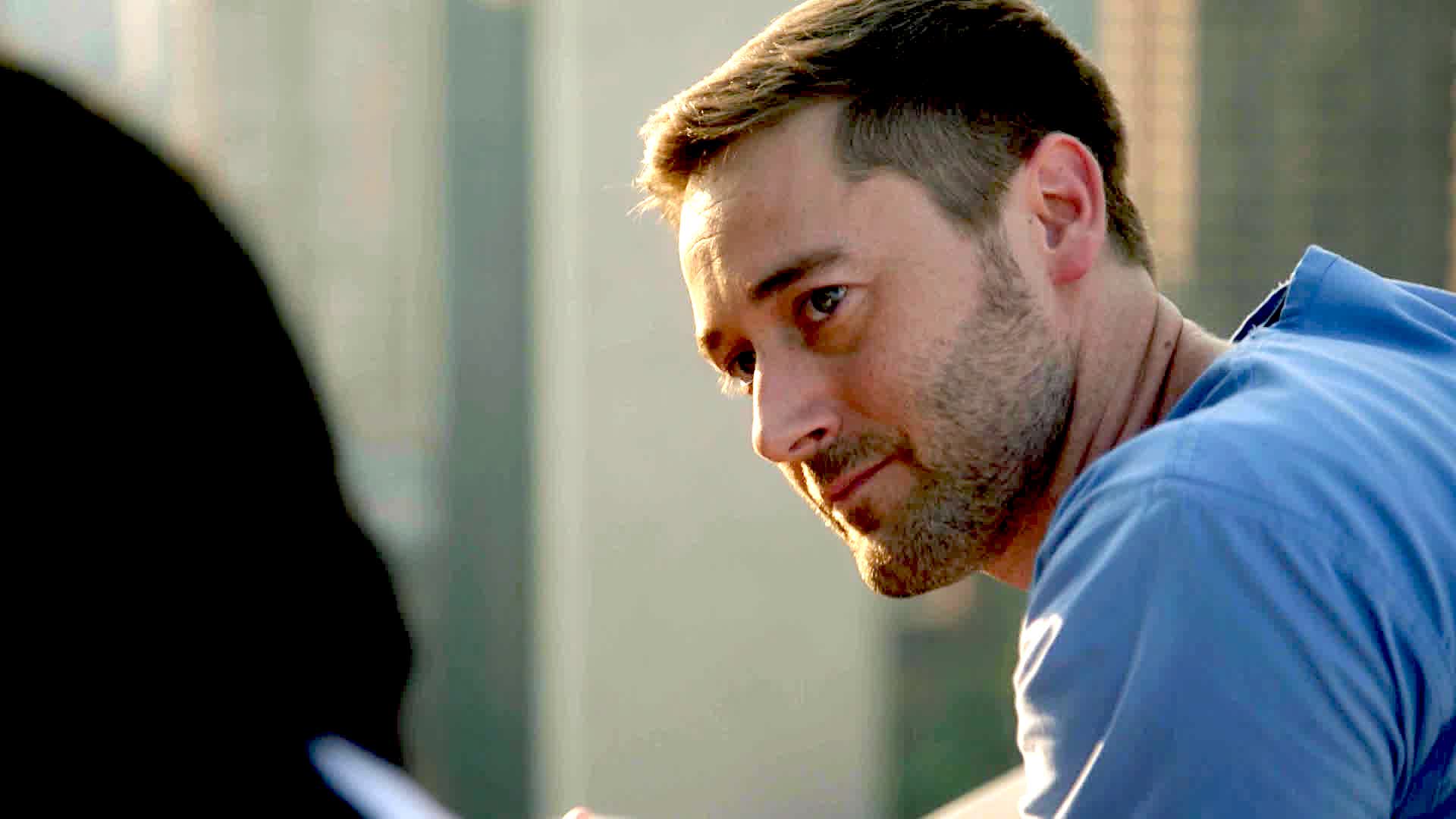
Max Goodwin / nbc.com
6 leadership lessons from the popular TV medical drama New Amsterdam
1. Serve your people
If I were to sum up Max Goodwin in four words they would be How can I help?
This is the question that Max asks every doctor in his team. He doesn’t tell people what to do, he doesn’t boss them around. Instead, he invites them to tell him what they need to do their jobs better.
How can I help? is one of the most powerful questions a leader could ask. And one of the most uncomfortable too.
It is powerful because it shows so much in so few words.
When a leader asks an employee How can I help?, he opens a communication channel. Instead of a speech delivered to the whole team at the same time, the leader chooses to talk to one person at a time. It’s a conversation, not a speech; it’s one-to-one, not one-to-many.
The leader offers his undivided attention to the employee and trusts them to tell him what they need to do their jobs better hence get better results for the company.
It is also an uncomfortable question because it puts the leader in a situation that many might find uneasy.
Some leaders believe they provide employees with everything they need to deliver the best results. Others believe they know better than their employees or that the company is running so well there’s no need for improvement.
Max Goodwin is the servant leader type.
Servant leaders tell their employees My job is to meet your needs. In a company led by a servant leader, team members feel heard and supported in their work which leads to high worker satisfaction rates.
The servant leader strives to help people grow, has good listening skills and a high level of empathy and emotional intelligence.
Of course, it’s not enough to listen and nod in approval, the leader must also deliver on his promise.
2. Implement radical decisions, challenge the status quo
At the first all-hands meeting since his appointment as the medical director of New Amsterdam Hospital, Max’s first decision is to fire the entire cardiac surgical department.
The department had the highest infections and death rate in New York City and the doctors were corrupt and greedy placing their earnings above their patients’ interests.
A decision deemed outrageous by the rest of the city’s medical directors. This is Max’s first in a series of controversial yet beneficial decisions to both the hospital and the patients.
When something needs to change, change it.
Be fearless and make the necessary decisions to improve your company or your team’s productivity.
Change the guidelines, change the requirements, change the company’s values if they don’t reflect your vision any longer.
Provide your team with the opportunity to support the change.
3. It’s ok to go back on your decisions
After Max fired every cardiac surgeon at New Amsterdam Hospital, he went back on his decision regarding dr Reynolds.
Dr Reynolds was a cardiac surgeon who stood out among his department colleagues as the only surgeon who had always put his patients’ well-being above his surgeon paycheck.
Max hires dr Reynolds back, promotes him to Head of Cardiovascular Surgery and assures him of his full support in putting a team of the best and diverse cardiac surgeons.
No one sets out to make bad decisions.
We make decisions based on the information we had at the time. If later those decisions prove to be wrong, it’s no use feeling bad about it. It’s the best we could have done at the time being.
Tell your team about your decision and the reasons behind it, why it was a good decision at the time and why it isn’t good anymore now.
Be open and honest, your team will appreciate and respect you for it.
4. Find a partner to keep you in check and brainstorm ideas with
Some studies on startups have reported that startups with two or more co-founders are more successful while others argued that startups with a single founder do better. This article writes about the pros and cons of married co-founders.
On one hand, if your startup is looking to raise money, statistics showed that companies with two or more founders were able to attract more money than those led by a single founder.
On the other hand, companies with a single founder were more likely to still be in business than those with two or more.
Whichever option you go with, whether you are leading a company or just a team, it’s always better to have someone to run your ideas by and keep you grounded.
A different viewpoint on a certain situation could provide additional insight and a potential solution.
Dr Helen Sharpe is Max’s partner. She is the Head of Oncology and Hematology and the Deputy Medical Director of New Amsterdam Hospital.
Helen is practical and realistic. She understands what Max is trying to achieve and is totally supportive although sometimes she sees things differently and pushes against his decisions.
5. Find creative solutions to difficult problems
There are many reasons viewers enjoy watching New Amsterdam. One of them is seeing Max find creative solutions to difficult problems which would be easily solved by firing employees or accepting the status quo.
Like the time he tried to find a solution for hospital employees doing obsolete jobs.
Instead of firing them, he decides to open a new hospital in a city where medical services were needed. These employees had a new hospital they could work in and feel useful.
Or the time he tried to help save the hospital money by finding a solution for a homeless patient, whose frequent hospital visits had cost New Amsterdam over a million dollars in one year. He realizes the patient knew the hospital inside out so instead of sending him to live on the street again, he gives him a job in the hospital.
6. Always do what’s best for your stakeholders
The Shareholder Theory states that a company’s main responsibility is to its shareholders i.e. owners of shares in the respective company. Milton Friedman, Nobel Prize recipient, economist and the author of the Shareholder Theory which he published in 1970 argued that the business goal of any company is to maximize returns to its shareholders.
This theory had a great influence on the business world and laid the foundation for corporate America. Big for-profit corporations had negative consequences on the American economic system and society at large.
Things have changed. Today, 181 CEOs of billion-dollar companies say it’s time to put the Shareholder Theory where it belongs – in the past and focus their efforts towards stakeholders.
For New Amsterdam, the stakeholders are the patients.
Max Goodwin’s decisions are always focused on providing exceptional care to patients by fighting bureaucracy and overturning the status quo.
For companies, stakeholders are their customers, employees, suppliers and the communities they do business in.
Corporations like Apple, Amazon and Coca-Cola have committed to deliver value to customers, invest in employees, deal fairly and ethically with suppliers and support the communities in which they work.
Join the Conversation
We’d love to hear what you have to say.
Get in touch with us on our LinkedIn Page, Facebook Page, Twitter or TikTok.
4 lessons in leadership from Hamilton: An American Musical
Hamilton is the latest hit in musicals which has rapidly grown to a pop culture status. Read on to learn 4 lessons in leadership from Hamilton: An American Musical.
Hamilton, the cultural phenomenon surpassed $1 billion in global sales
Hamilton: An American Musical made its Broadway debut six years ago and it has already become one of the most popular musicals of all time.
In 2016, the show won 11 Tony Awards, the Grammy for best musical theatre album and the Pulitzer Prize for Drama.
The Hamilton music is a wonderful combination of rap, hip-hop and R&B raising the bar for every actor in the show and setting records. Because it’s rap and hip-hop, Hamilton packs the highest number of words per minute than any other musical: 144 with a total word count of 20,520. The runner-up, Phantom of the Opera had 77 words per minute and a total of 4,709 words. The music literally takes your breath away!
Tickets sell out almost instantly. Hamilton is a smashing hit with fans of all ages and all over the world. Just browse the content on the musical’s social accounts (followed by 4,450,000 million people combined, btw!) and see for yourself.
Disney+ has contributed to Hamilton’s global success by bringing the acclaimed musical to the small screen. The Hamilton Movie premiered on Disney+ streaming service last year, in July. It was a good business decision for Disney+ also: the musical spurred a 74% spike in downloads.
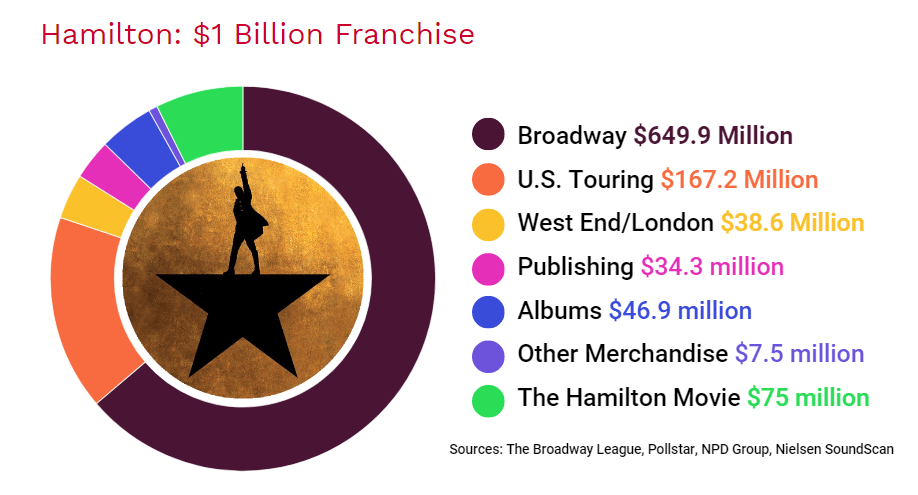
4 lessons in leadership from Hamilton: An American Musical
Hamilton tells the story of Alexander Hamilton, one of the Founding Fathers of the United States of America.
The story, music and lyrics were written by actor and Tony winner Lin-Manuel Miranda and is narrated by Aaron Burr, a contemporary of Hamilton and the third vice president of the United States.
Who is Alexander Hamilton?
Alexander was an immigrant from the Caribbean who raised himself from poverty.
He was born out of wedlock and became an orphan as a child. He was driven by ambition, had a remarkably sharp mind and rhetorical skills.
When he was in his early 20s, Alexander became George Washington’s right-hand man during the American Revolutionary War.
Later he was appointed the 1st U.S. secretary of the treasury. He played a key role in defending and ratifying the U.S. Constitution and was the chief architect of the American financial system.
Here’s what the leaders of the 21st century can learn from the 18th-century leader, Alexander Hamilton:
- Make self-growth a goal for you and your team;
- Develop partnerships;
- Tell the world what you believe in and stand by your beliefs;
- Communicate your ideas.
Lesson #1: Make self-growth a goal for yourself and your team
Alexander Hamilton is a unique figure among the other Founding Fathers of America. His family was not wealthy and didn’t have any titles. He was so poor that he couldn’t afford to go to any regular schools. Because he was an illegitimate child, Alexander was also denied access to church schools.
But he was an avid reader. What he couldn’t learn in school, he learned by himself.
By the age of 15, he had already developed a talent for mathematics and business working as a clerk for a local successful merchant.
He could also write extremely well for his age which helped him stand out in his community.
Helped by his employer, Alexander enrolled in King’s College (later renamed Columbia University) at 16 where he was granted independent study. This allowed Alexander to move through his courses quickly, often hiring college professors to provide him with personal instruction outside of regular class hours. He also became fluent in French which would give him an advantage during the American Revolution.
After the war, he studied law to pass the bar exam and become a lawyer. He didn’t go to law school, he studied independently for ten months before passing the exam with flying colours.
Hamilton was an ambitious young man who learned very early in his life that acquiring knowledge and developing one’s skills and abilities was paramount to being fulfilled and successful.
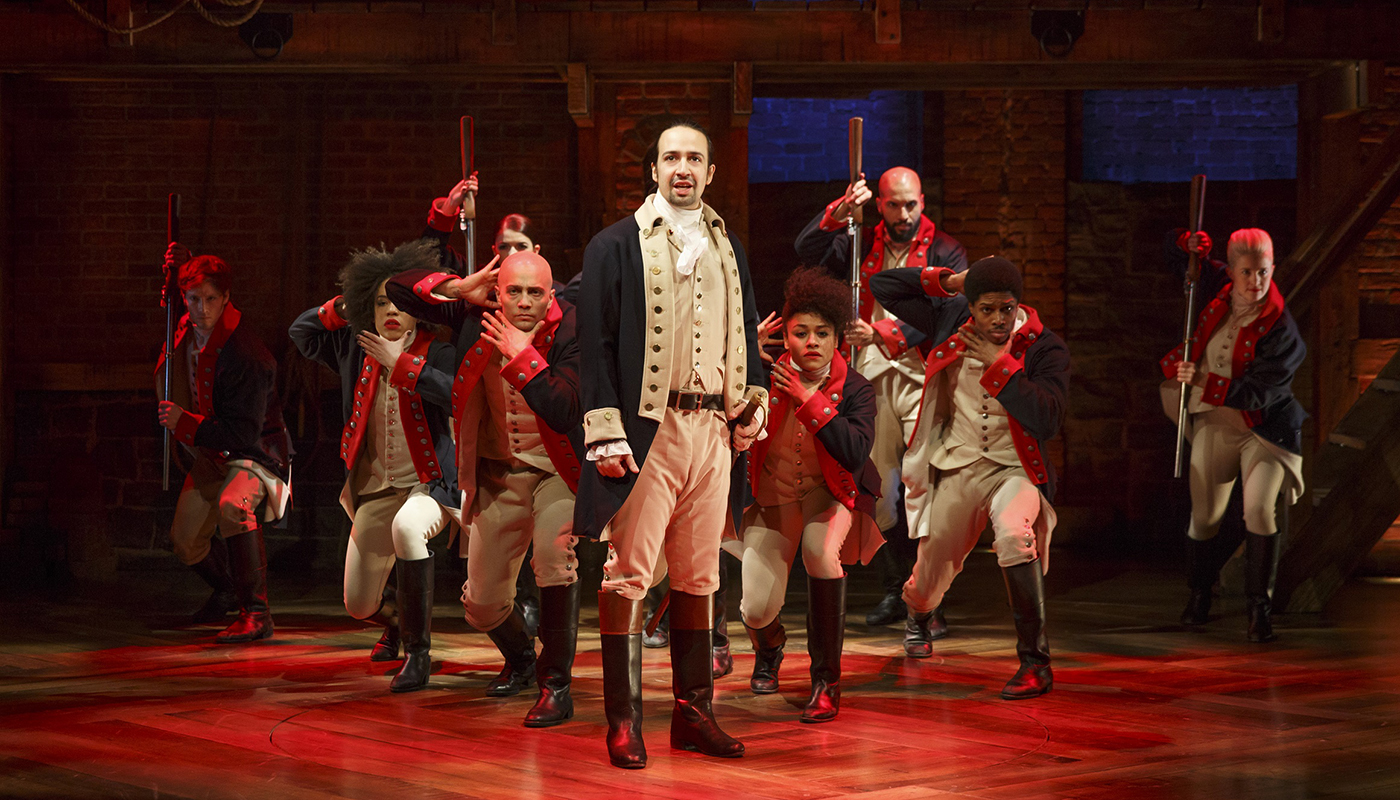
Scene from Hamilton, the musical
No matter your life situation, expanding your knowledge in the areas of your interest is essential to your success.
Young or old, learning never stops. Go deeper on the topic of your choosing. Or start afresh on a new path towards a different interest that you always wished you could explore but never found the time.
Now is the time to begin. Pick up a book and become a self-taught leader. Or enroll in an online class.
If you are looking to learn the principles of innovative companies, attend BRAND MINDS’ Business Strategy Masterclass for Top Executives with London Business School professor Costas Markides.
The masterclass takes place online, on the 23rd of March, 2021. You will learn how to develop custom business models and business strategies for your company. Learn more about the masterclass.
A successful leader seeks opportunities to grow not only himself but his team too. Because a leader’s main responsibility is to grow other leaders. So consider attending our business masterclass with your team. Check our discounts for team growth.
Lesson #2: Develop and maintain partnerships
The musical depicts the strong bond between Hamilton and several influential figures, including spy Hercules Mulligan, the anti-slavery John Laurens, the French revolutionary Marquis de Lafayette and commander-in-chief and later the first President of the United States George Washington.
Hamilton became friends with Mulligan, Laurens and Lafayette. They shared the same values, supported each other and became close during the war. Their leadership, resourcefulness, and courage helped secure the American victory with the British.
A young captain in the army, Hamilton demonstrated superior command of administrative and logistical matters which soon brought him to the attention of General George Washington. The general invited him to become one of his aides and Alexander accepted the offer. He remained on Washington’s staff for four years forming a strong and lasting friendship with the general, who relied on him heavily. It was also a mentorship relationship, one which helped Hamilton acquire leadership skills.
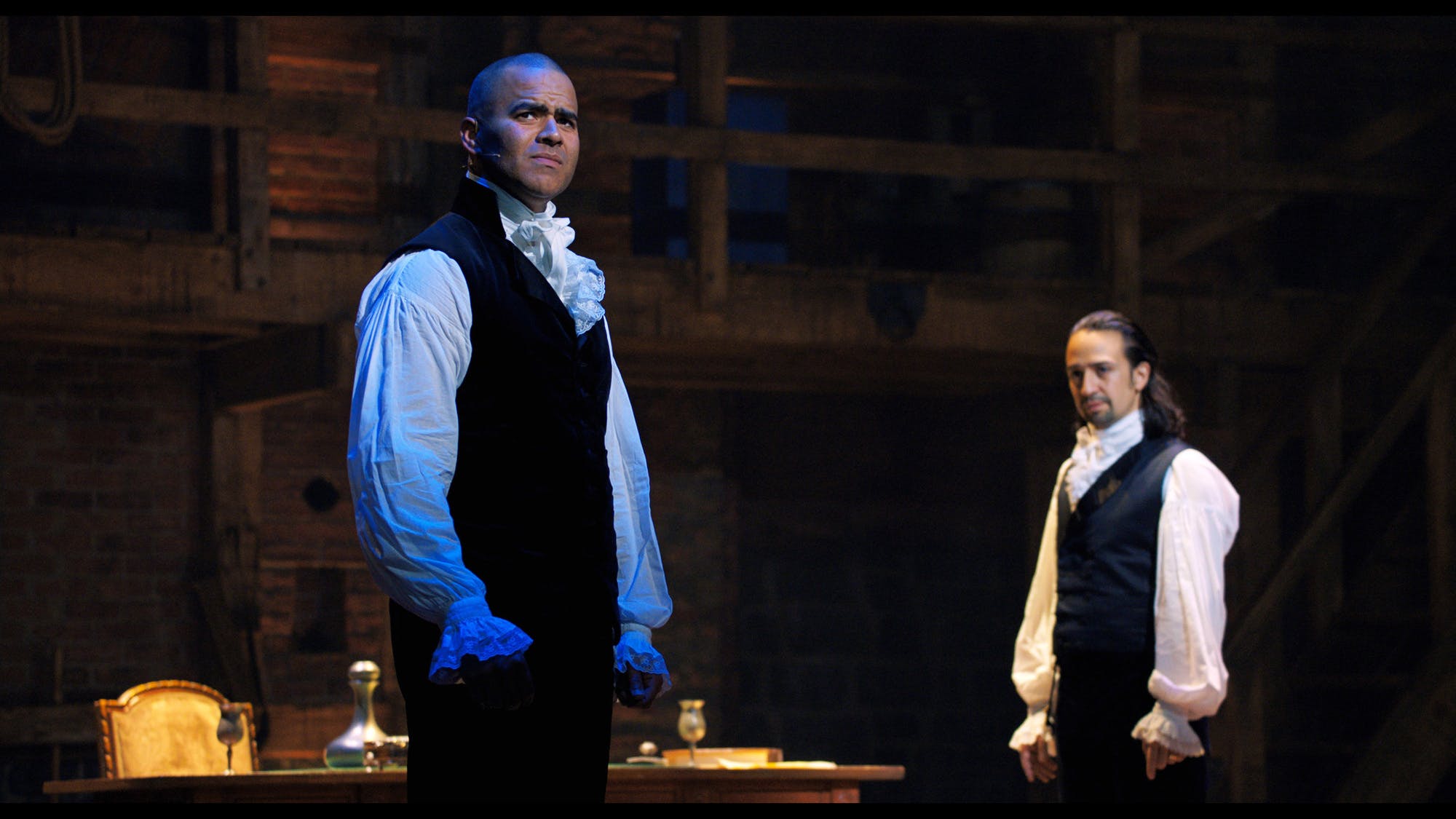
Scene from the musical: General George Washington and his right-hand man, Alexander Hamilton
Aside from a close-knit team, a leader needs partners, people who share the same values and who work together to achieve a common goal. It takes a lot of work and trust to build a valuable partnership. Both partners must deliver on their word and support each other through thick and thin.
Look for partners that can build you up. Develop close relationships with people that you can learn from. Seek and offer support to your partners when they need it. Let them know that you will be there for them. And they will be there for you.
Lesson #3: Tell the world what you believe in and stand by your beliefs
Hamilton had strong beliefs and didn’t shy away from making them known to whoever was willing to listen.
Thanks to his rhetorical abilities, it was easy for him to step on a chair and convey his ideas to the audience with confidence and ambition.
Here is the scene where Laurens, Madison and Lafayette notice Alexander’s talent and gently encourage him to the forefront – “let’s get this guy in front of a crowd”.
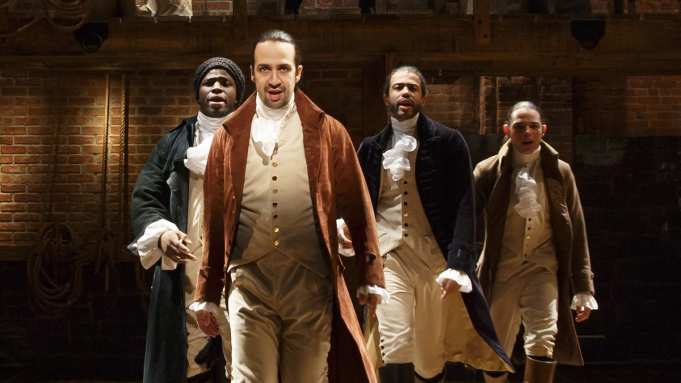
Scene from the musical: Alexander Hamilton (front) with Laurens, Madison and Lafayette
What are your core values and purpose? Talk about them, share them with your employees, partners, clients and suppliers.
Today a company employing thousands of people all over the world has this in common with a company with just twenty employees – they both stand for something.
Walmart, Disney and L’Oreal have announced their commitments to a zero deforestation policy, an initiative that ensures companies make their products without destroying the world’s forests.
Atlassian, Dropbox and Accenture champion diversity and foster a culture of inclusivity.
And then you have small companies or startups that are built around sustainability and diversity from the get-go. Ecoalf is a Spanish company that turns plastic sea waste into high-quality fashion products. Danish company Matter assists its clients to choose a sustainable pension, namely the company makes sure that its clients invest their pensions in companies that have a positive impact on the world.
When the business is built on a purpose with positive social and environmental impact, it differentiates itself from the competition. Having a brand purpose that customers care about has been reported to influence the brand’s revenue.
Accenture’s latest annual Global Consumer Pulse Research found that 62 per cent of customers want companies to take a stand on current and broadly relevant issues like sustainability, transparency or fair employment practices.
Unilever is a good example of how focusing on sustainability drives revenue. Nearly half of its top 40 brands focus on sustainability with Knorr, Dove and Lipton among them. According to the report, these brands grow 50 per cent faster than the company’s other brands and deliver more than 60 per cent of the company’s growth.
Making your beliefs known is also beneficial to your personal brand in that it opens up various opportunities for projects or support that you couldn’t get otherwise. Instead of going to people, people come to you.
In the musical, Aaron Burr is the opposite of Hamilton. He believes that revealing his views on topics of the highest importance makes him vulnerable, effectively handing his enemies the bullet with which to kill him. One of his recommendations to Alexander starting out his life in New York is to “talk less, smile more and don’t let them know what you’re against or what you’re for”.
That strategy didn’t play out well for Aaron when he ran against Thomas Jefferson for the presidency of the United States years later, in 1800. With both candidates at a tie, Hamilton was called upon to announce which candidate claimed his vote. Although he didn’t agree with Jefferson on many subjects, Hamilton votes for him because “when all is said and all is done, Jefferson has beliefs, Burr has none!”
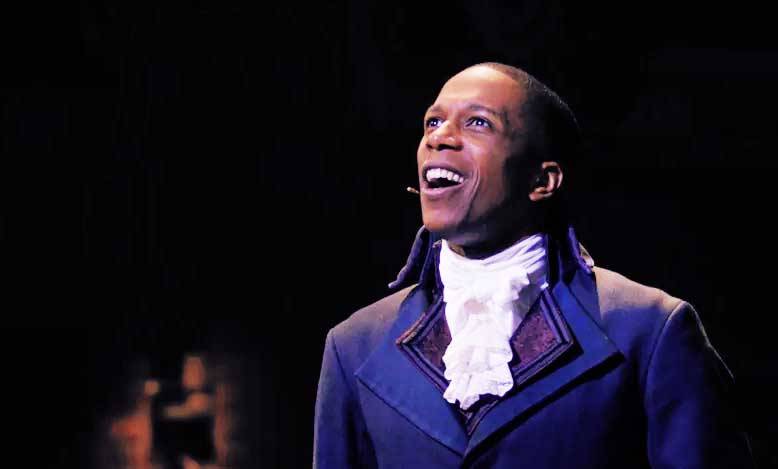
Scene from the musical: Aaron Burr played by Leslie Odom Jr
Lesson #4: Communicate your ideas, beliefs and purpose
As you learned at #1, Alexander was quite the writer. When he was a teenager, he published several letters and poetry in his local newspaper that made him famous in his community.
Later on, among his duties as Washington’s right-hand man was writing letters for the General.
While studying for his bar exam, Alexander published a book called Practical Proceedings in the Supreme Court of New York which compiled his analysis of old New York court cases. The book became a manual in New York legal studies for decades afterwards.
To convince the people that the Constitution was essential to their liberty, Hamilton decided to write a series of essays. He enlisted John Jay and James Madison to assist him in writing the essays. The three men published 85 essays which became collectively known as the Federalist Papers of which Hamilton wrote 52.
How did Hamilton write? Paraphrasing the Non-stop song: Hamilton wrote day and night like he was running out of time, like tomorrow won’t arrive, as he needed it to survive.

Excerpt from the Non-stop scene
If you’re leading a company, people want to hear from you. If you’re leading a team, the team members want to hear from you.
You have a unique perspective on business and life. What are your challenges? What are your successes? What are your aspirations? What inspires and motivates you? People want to learn about other people’s experiences.
Today there are many ways leaders can communicate their ideas, beliefs and purpose. If you’re good with writing words on paper, start a blog. If you’re a good speaker, start a podcast or YouTube channel. Go live on Facebook or LinkedIn.
Bill Gates writes on Gates Notes, his blog and has just started hosting a podcast series with co-host actress Rashida Jones. Former Disney CEO Robert Iger wrote a book. And I could go on with many other examples.
The tools are readily available, all you need is a simple strategy and the time to implement it.
Join the Conversation
We’d love to hear what you have to say.
Get in touch with us on our LinkedIn Page, Facebook Page, Twitter or TikTok.
Alexander Hamilton biography source: SparkNotes
Leadership lessons from 3 of the 100 most influential people according to TIME
Founded in 1923, TIME has the world’s largest circulation for a weekly news magazine with a readership of 26 million for its print edition.
The magazine is also known for TIME 100, its annual list of the 100 most influential people of the year.
In this article, I talk about three of them and their leadership lessons: Zhang Yiming, Bob Iger and Tara Westover.
Leadership lessons from 3 of the 100 most influential people according to TIME
ZHANG YIMING

Zhang Yiming, founder of ByteDance. Photographer: Giulia Marchi/Bloomberg via Getty Images
Zhang Yiming founded ByteDance in 2012. The Chinese company is the parent company of popular apps Jinri Toutiao, a news aggregation platform and TikTok, a popular short-form video sharing platform.
TikTok is the most downloaded app on Apple devices for the first quarter of 2019 with over 1 billion downloads to date according to SensorTower.
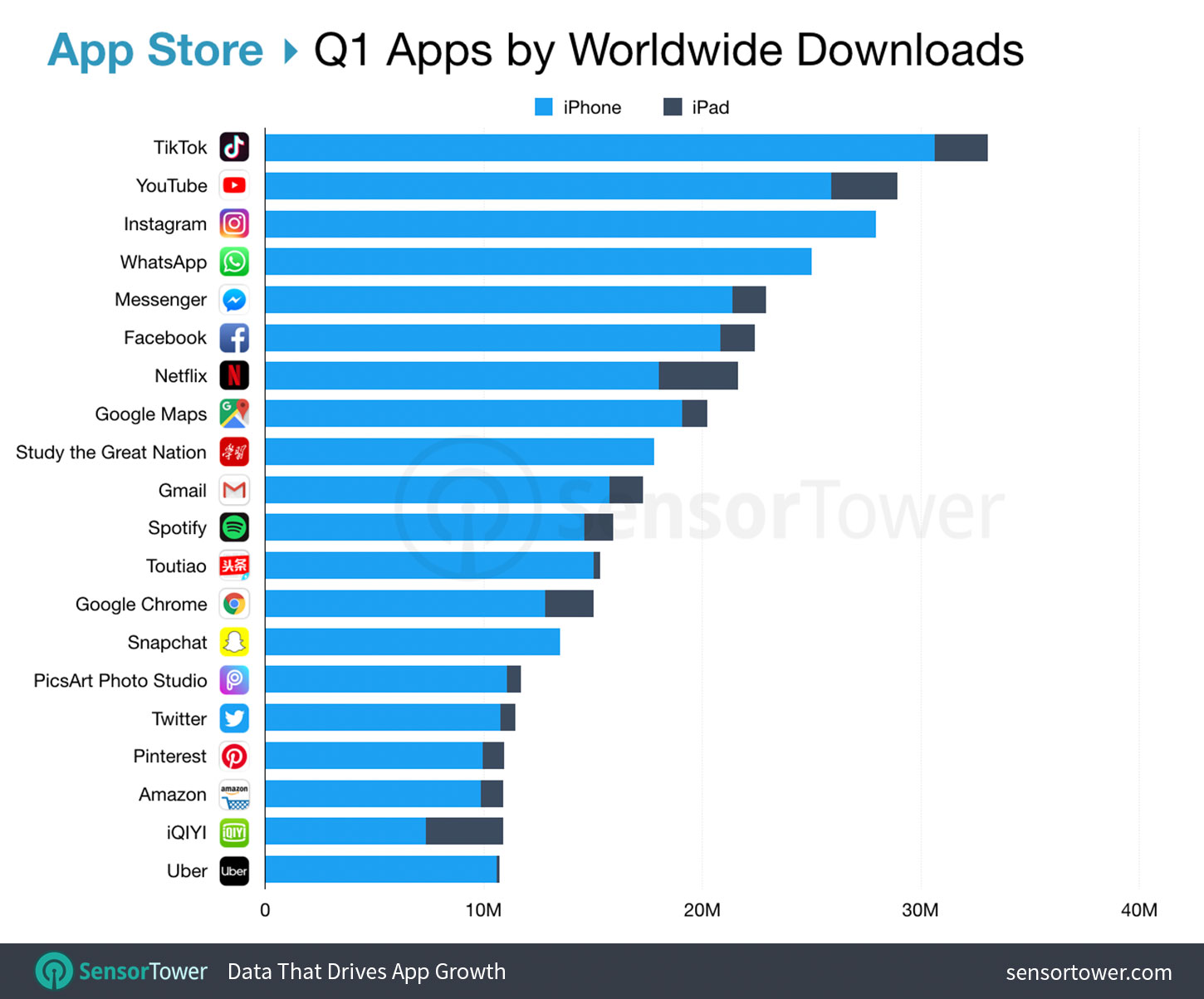
ByteDance’s founder started out as an ordinary tech engineer at Microsoft. Today, the 36-year-old is among the richest in China with an estimated $16.2 billion net worth.
Last October, Zhang secured a $3 billion funding round that valued ByteDance at around $75 billion. His strategy for ByteDance is to diversify its portfolio from software to hardware. It is rumoured that a ByteDance smartphone will be released by the end of 2019.
Your sense of responsibility and your desire to do things well will drive you to do more things and to gain experience.
CEO ByteDance Zhang Yiming
Here’s what makes a better leader according to Zhang Yiming:
- Use your own product/service. It’s the only way to understand users and what they experience;
- Get yourself exposed to various people and experiences;
- Develop a work ethic which transcends the boundaries of your responsibilities.
BOB IGER
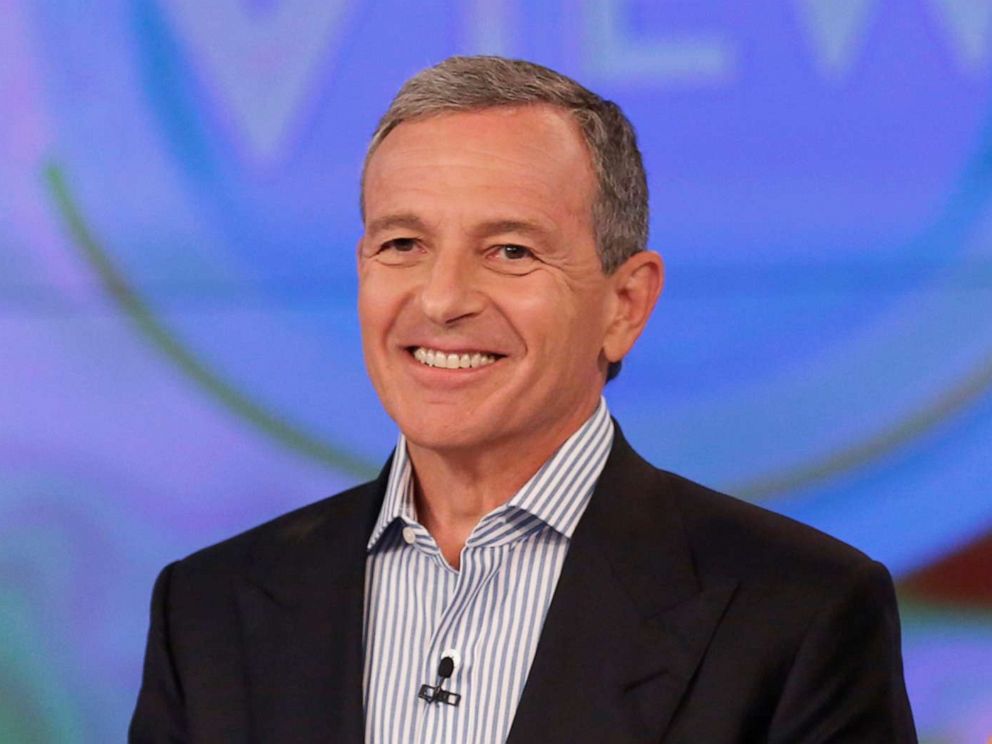
The Walt Disney Company CEO Bob Iger / Image source: abcnews.go.com
Bob Iger is Chairman and CEO of The Walt Disney Company, one of the world’s largest and most admired media and entertainment companies.
Since becoming CEO in 2005, he oversaw the acquisitions of Pixar (2006), Marvel (2009), Lucasfilm (2012) and 21st Century Fox (2019).
In 2016 Disney expanded its international footprint by opening its first theme park and resort in Mainland China, Shanghai Disney Resort.
He also took the company to the next level with the use of technology by creating an ambitious direct-to-consumer strategy that features the company’s various streaming services, including Disney+, which debuts on November 12.
His book, The Ride of a Lifetime: Lessons learned from 15 years as CEO of The Walt Disney Company launched on September 23.
Here are 9 leadership lessons that he shared in a LinkedIn article where he tells the story of the Lucasfilm acquisition and the making of the first Disney produced Star Wars film.
9 leadership lessons from Bob Iger
- Talk to your team members to make sure everyone is on the same page and fully understand the stakes;
- Share the burden of what it means to be responsible with your team members;
- Communicate to your team members that you are their partner and not just a CEO putting pressure on them to deliver results;
- Be a resource and a collaborator, make them feel that they could call you at any moment to discuss any problem they might wrestling with;
- Remind your team that you believe in them and that there are no better minds to run your company’s projects;
- If you can’t make the deadline, it’s ok. Don’t rush to deliver your project on time even if this means taking a short-term hit to your bottom line. Sacrificing quality is never an option;
- Decide wisely when it’s worth engaging in any public discourse and when it’s not;
- When you run negotiations, let your partners know clearly about where you stand while allowing yourself to show empathy if the situation calls for it;
- A successful deal is a deal where you build trust with your partners and suppliers.
You have to try to recognize that when the stakes of a project are very high, there’s not much to be gained from putting additional pressure on the people working on it.
The Walt Disney Company CEO Bob Iger
TARA WESTOVER

Tara Westover / Image source: newstatesman.com
Zhang Yiming and Bob Iger run two highly successful companies. Both men have over 10k employees and 200k respectively under their leadership.
Leading people is one of the most challenging and wonderful jobs in the world. But the first person you need to start with is yourself.
How could you possibly lead other people to achieve their dreams if you cannot change your life to achieve yours?
Tara Westover is one of the best examples of personal growth in recent times.
She is the author of Educated: A Memoir, which has been on Top 10 New York Times Bestsellers List for 86 weeks.
The book was published in 2018 and has been translated into 35 languages. It won many awards among which the 2018 Goodreads Choice Award for Memoir, the Audie Award for Autobiography/Memoir, Book of the Year by the American Booksellers Association as well as being featured on Bill Gates’s Holiday Reading List and President Barack Obama’s Favorite Books of the Year list.
Tara’s story is about how one fifteen-year-old girl has decided that her family’s values were not her own and didn’t allow her parents to shape her future.
It’s a story about grit, resilience and strength.
She went against her family’s wishes and that took courage. She suffered physical and emotional abuse.
Her parents didn’t give her wings to grow and become everything that she could like most parents wish for their children. They tried to put her in a dark cage where she would never see the light of knowledge and self-actualization. She fought back and escaped.
Leadership lessons from Tara:
- Never give up on your dream;
- Building your dream takes grit, resilience, courage and strength;
- Learning is the stepping stone towards success;
- Success is linked to personal growth.
We are thrilled to have Tara Westover on the stage at BRAND MINDS 2020, where she’ll deliver a speech about The Power of Education.

Join the Conversation
We’d love to hear what you have to say.
Get in touch with us on Facebook Group and Twitter.
